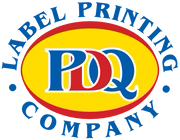
Food Labelling Requirements in Australia: What You Need to Know
Share
Clear and accurate food labelling isn’t just good practice—it’s a legal requirement in Australia. Whether you manufacture packaged foods, run a home-based food business, or import products for retail, your labels must comply with the Australia New Zealand Food Standards Code (FSANZ). Understanding the standards helps protect consumers and reduces your risk of fines, recalls, or distribution issues.
Below is a practical breakdown of what must be included on food labels—and how to make sure you stay compliant.
Why Food Labelling Matters
Food labels help consumers make informed choices. A proper label communicates:
- What the product is
- What ingredients it contains
- Any allergens present
- How to safely store and prepare it
- Its nutritional content
This ensures transparency, builds trust, and supports product safety.
Key Labelling Requirements in Australia
1. Name or Description of the Food
Your product name must clearly describe what it is.
2. Ingredient List
List ingredients in descending order by weight, including components of compound ingredients where required.
3. Allergen Declarations
You must clearly declare allergens such as:
- Milk
- Eggs
- Wheat (gluten)
- Soy
- Tree nuts & peanuts
- Sesame
- Fish & shellfish
Highlight allergens for visibility (e.g., bold text).
4. Nutrition Information Panel (NIP)
Most packaged foods require an NIP. It must show the following per serving and per 100g (or mL):
- Energy (kJ)
- Protein (g)
- Total Fat (g)
- Saturated Fat (g)
- Carbohydrate (g)
- Sugars (g)
- Sodium (mg)
5. Net Weight or Volume
Display accurate net quantity (e.g., 500g, 750mL).
6. Date Marking
- Use By Date — for food safety
- Best Before Date — for quality guidance
7. Storage or Handling Instructions
Required when temperature control or special handling is needed.
8. Country of Origin Statement
Packaged foods must show origin details, such as:
Made in Australia from at least 70% Australian ingredients.
9. Business Name and Local Contact
Include your business name and an Australian address or contact details.
Common Mistakes to Avoid
- Missing or incorrect allergen information
- Using fonts smaller than 3mm on standard packaging
- Outdated labels after recipe changes
- Incorrect serving size calculations
Need High-Quality, Compliant Food Labels?
If you’re ready to print your labels, use materials that are durable, professional, and suitable for food packaging environments.
Check out:
👉 https://shop.pdqlabels.com.au/
PDQ Labels offers:
- Custom printed food labels
- Gloss, matte, & waterproof synthetic options
- Roll labels compatible with Epson, Afinia, VIPColor & Primera printers
- Fast turnaround and custom cutting options
Perfect for sauces, bakery items, ready meals, snacks, beverages, and more.
Labelling is a legal requirement—and an opportunity to build trust with your customers. By ensuring your labels meet FSANZ standards, you protect your business and strengthen your brand.
For professionally produced labels tailored to Australian regulations, visit:
https://shop.pdqlabels.com.au/



